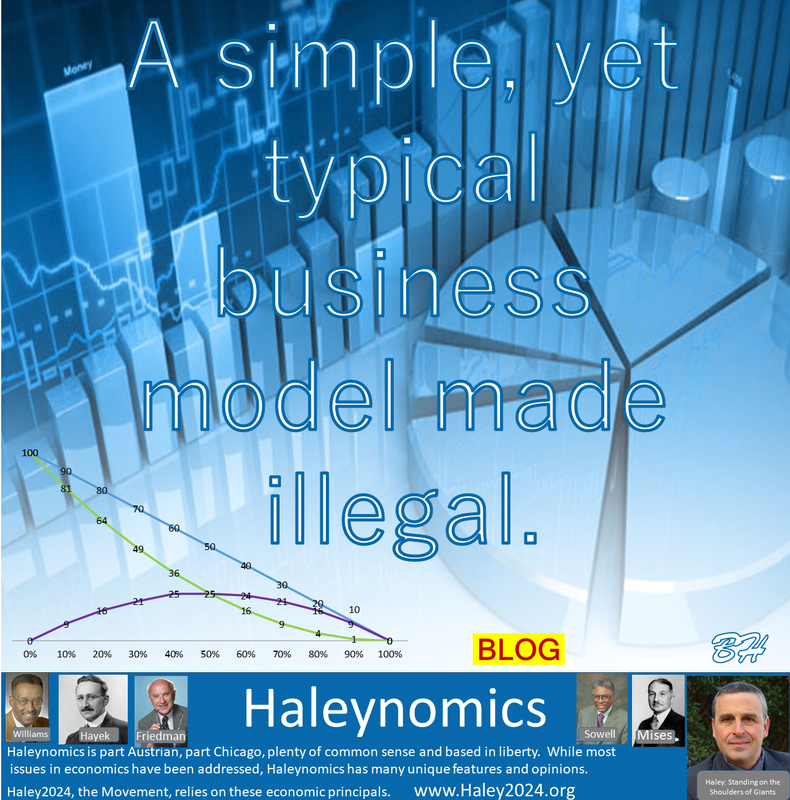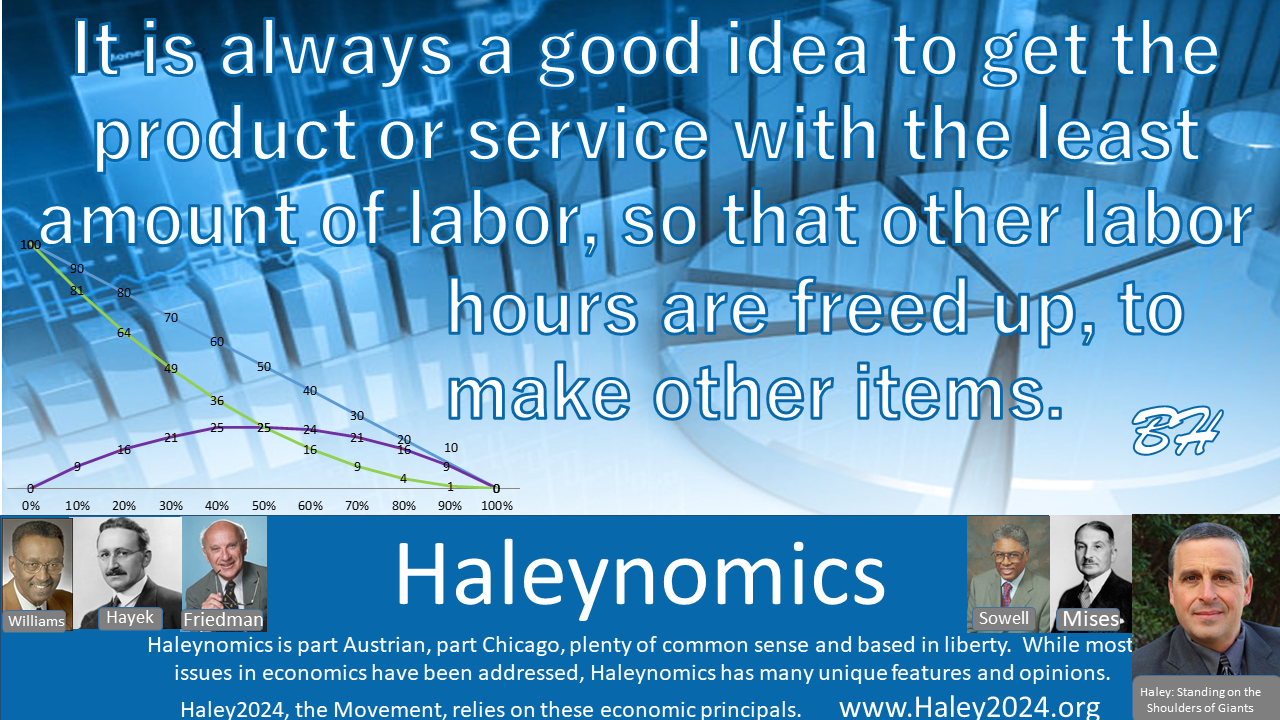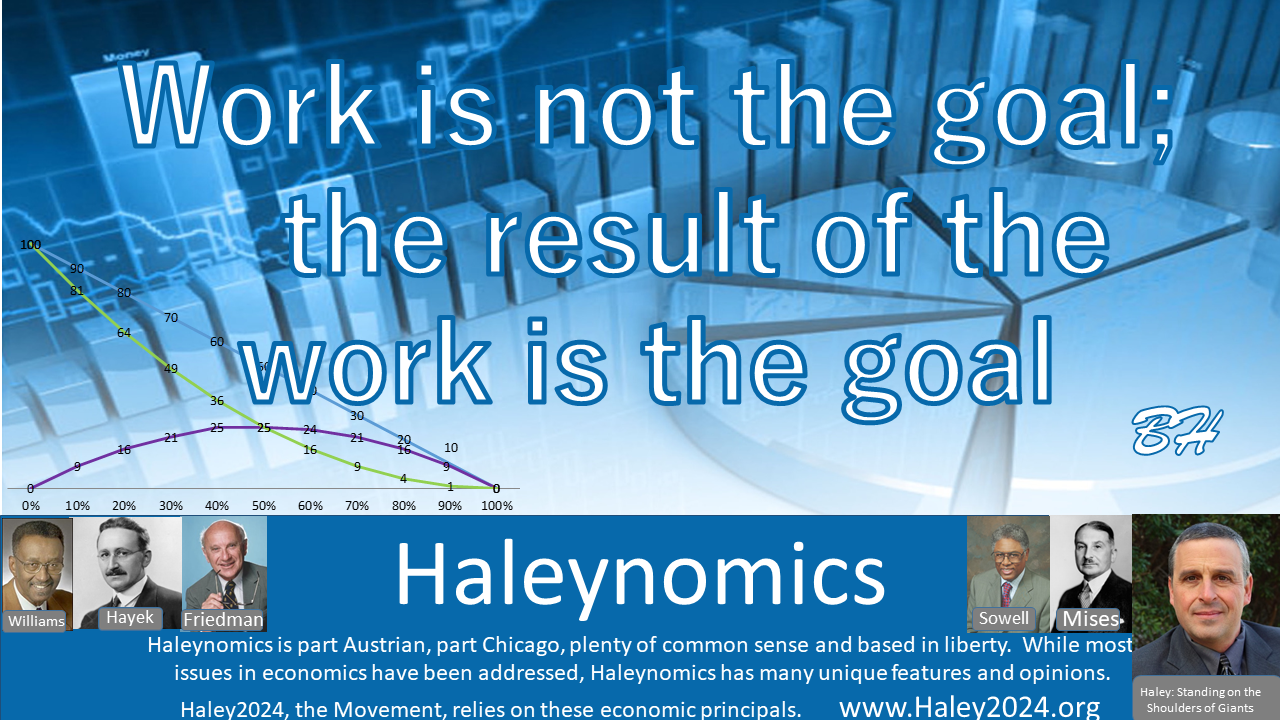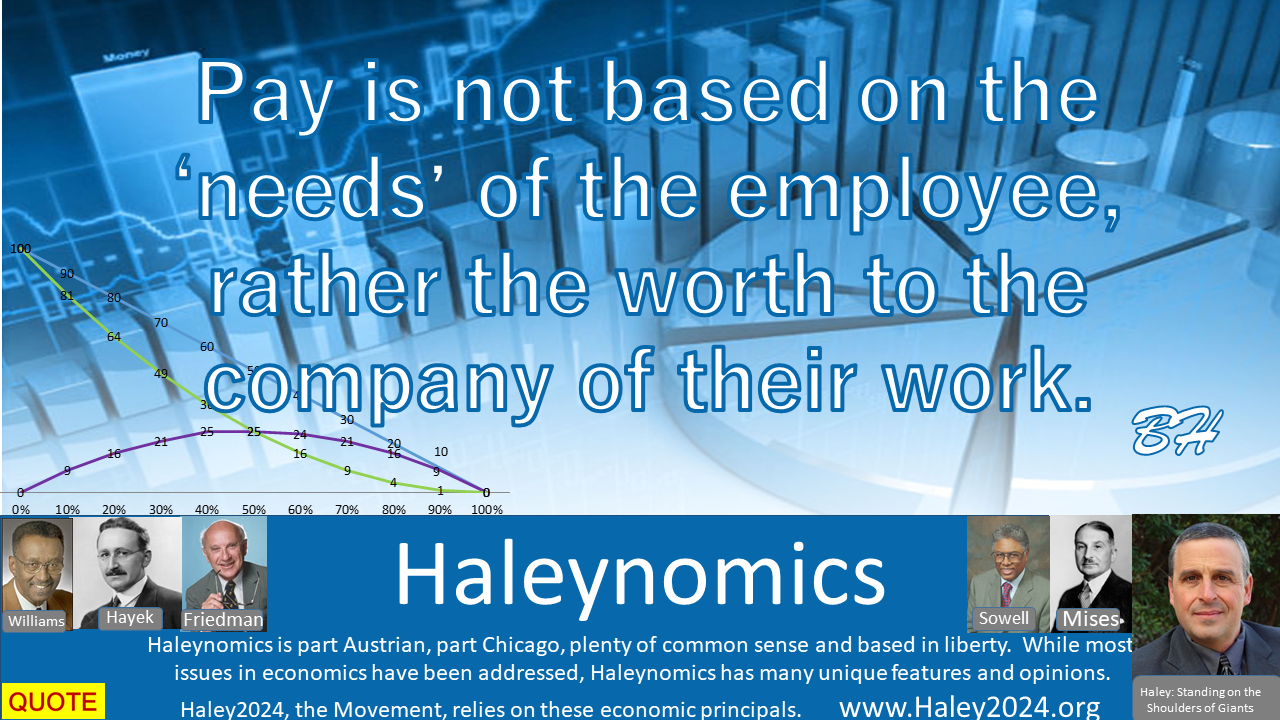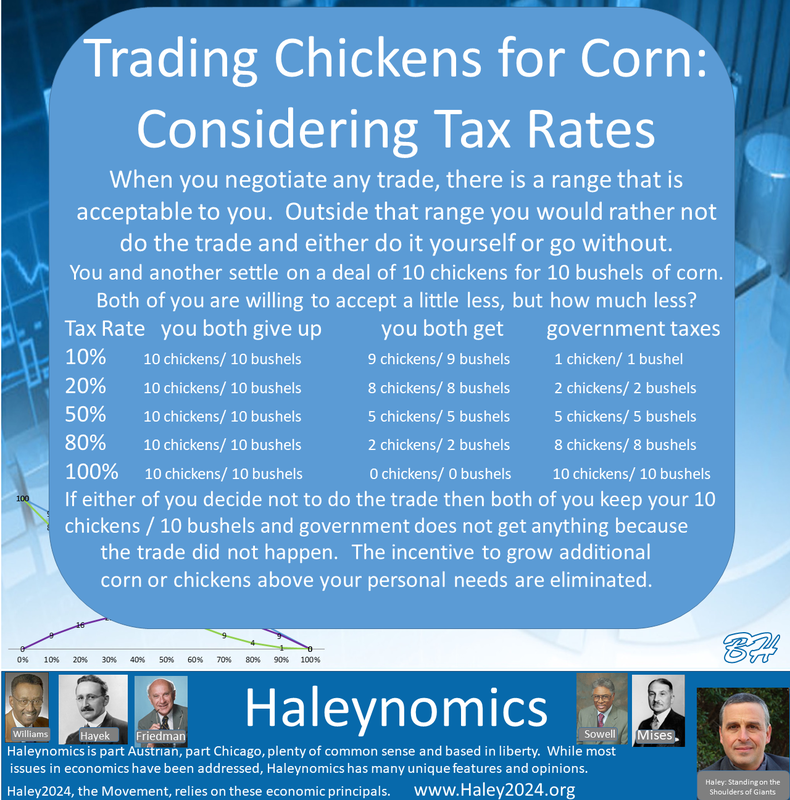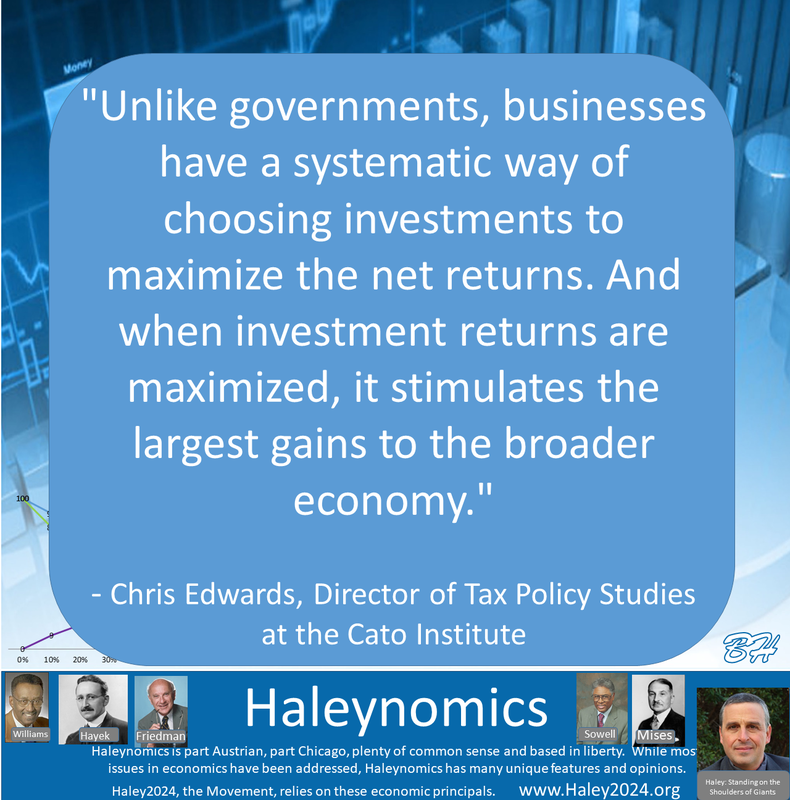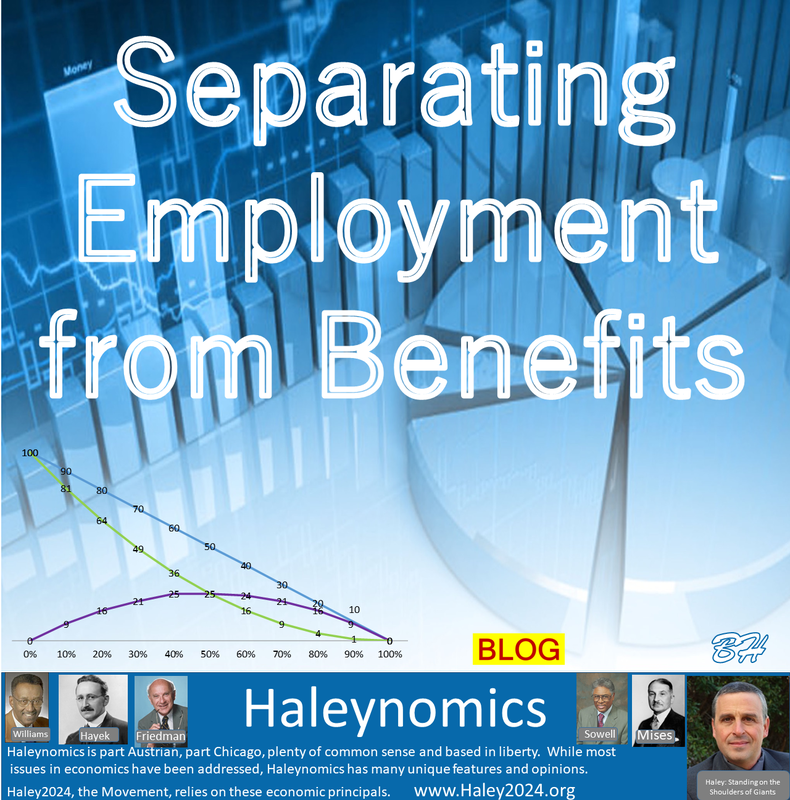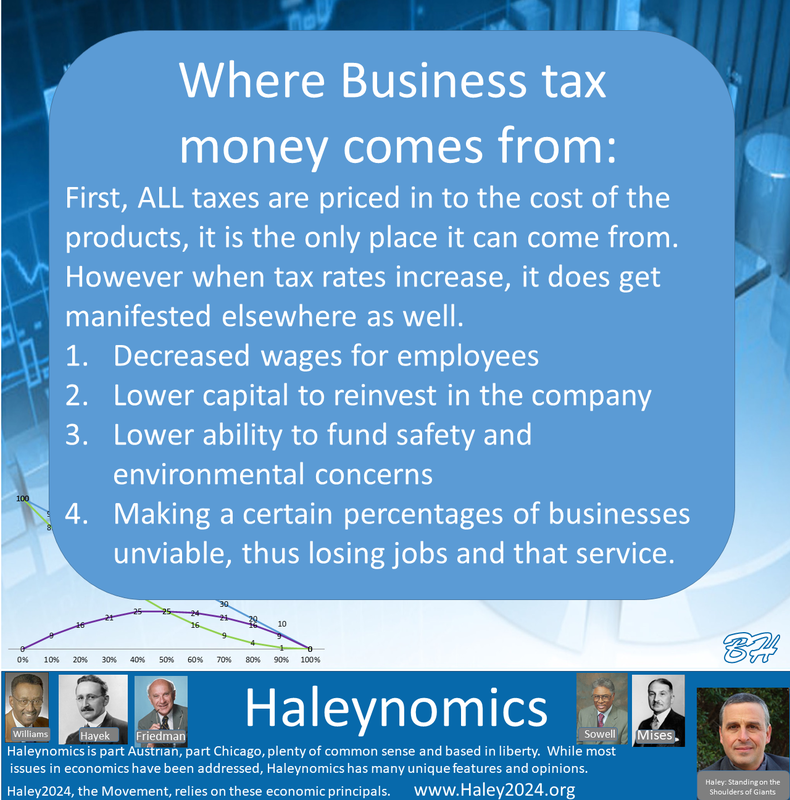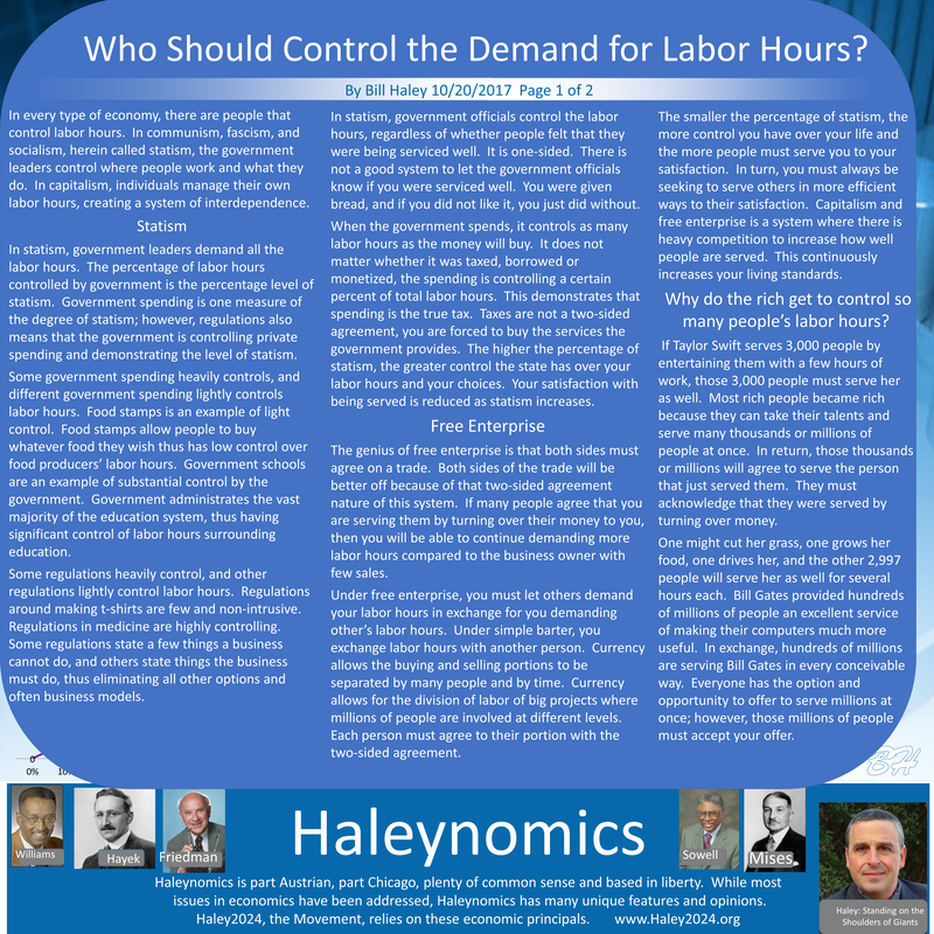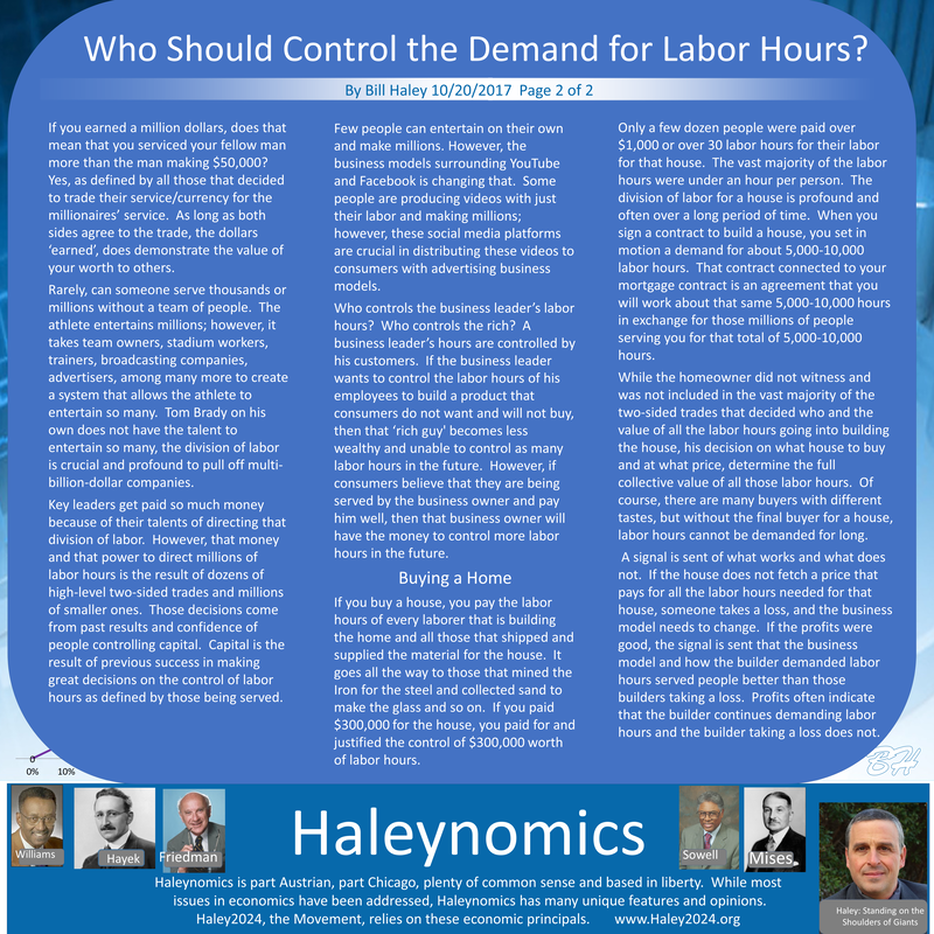Statism
| In statism, government leaders demand all the labor hours. The percentage of labor hours controlled by government is the percentage level of statism. Government spending is one measure of the degree of statism; however, regulations also means that the government is controlling private spending and demonstrating the level of statism. |
| Some government spending heavily controls, and different government spending lightly controls labor hours. Food stamps is an example of light control. Food stamps allow people to buy whatever food they wish thus has low control over food producers’ labor hours. Government schools are an example of substantial control by the government. Government administrates the vast majority of the education system, thus having significant control of labor hours surrounding education. |
| Some regulations heavily control, and other regulations lightly control labor hours. Regulations around making t-shirts are few and non-intrusive. Regulations in medicine are highly controlling. Some regulations state a few things a business cannot do, and others state things the business must do, thus eliminating all other options and often business models. |
| In statism, government officials control the labor hours, regardless of whether people felt that they were being serviced well. It is one-sided. There is not a good system to let the government officials know if you were serviced well. You were given bread, and if you did not like it, you just did without. |
| When the government spends, it controls as many labor hours as the money will buy. It does not matter whether it was taxed, borrowed or monetized, the spending is controlling a certain percent of total labor hours. This demonstrates that spending is the true tax. Taxes are not a two-sided agreement, you are forced to buy the services the government provides. The higher the percentage of statism, the greater control the state has over your labor hours and your choices. Your satisfaction with being served is reduced as statism increases. |
Free Enterprise
| The genius of free enterprise is that both sides must agree on a trade. Both sides of the trade will be better off because of that two-sided agreement nature of this system. If many people agree that you are serving them by turning over their money to you, then you will be able to continue demanding more labor hours compared to the business owner with few sales. |
| Under free enterprise, you must let others demand your labor hours in exchange for you demanding other’s labor hours. Under simple barter, you exchange labor hours with another person. Currency allows the buying and selling portions to be separated by many people and by time. Currency allows for the division of labor of big projects where millions of people are involved at different levels. Each person must agree to their portion with the two-sided agreement. |
| The smaller the percentage of statism, the more control you have over your life and the more people must serve you to your satisfaction. In turn, you must always be seeking to serve others in more efficient ways to their satisfaction. Capitalism and free enterprise is a system where there is heavy competition to increase how well people are served. This continuously increases your living standards. |
Why do the rich get to control so many people’s labor hours?
| If Taylor Swift serves 3,000 people by entertaining them with a few hours of work, those 3,000 people must serve her as well. Most rich people became rich because they can take their talents and serve many thousands or millions of people at once. In return, those thousands or millions will agree to serve the person that just served them. They must acknowledge that they were served by turning over money. |
| One might cut her grass, one grows her food, one drives her, and the other 2,997 people will serve her as well for several hours each. Bill Gates provided hundreds of millions of people an excellent service of making their computers much more useful. In exchange, hundreds of millions are serving Bill Gates in every conceivable way. Everyone has the option and opportunity to offer to serve millions at once; however, those millions of people must accept your offer. |
| If you earned a million dollars, does that mean that you serviced your fellow man more than the man making $50,000? Yes, as defined by all those that decided to trade their service/currency for the millionaires’ service. As long as both sides agree to the trade, the dollars ‘earned’, does demonstrate the value of your worth to others. |
| Rarely, can someone serve thousands or millions without a team of people. The athlete entertains millions; however, it takes team owners, stadium workers, trainers, broadcasting companies, advertisers, among many more to create a system that allows the athlete to entertain so many. Tom Brady on his own does not have the talent to entertain so many, the division of labor is crucial and profound to pull off multi-billion-dollar companies. |
| Key leaders get paid so much money because of their talents of directing that division of labor. However, that money and that power to direct millions of labor hours is the result of dozens of high-level two-sided trades and millions of smaller ones. Those decisions come from past results and confidence of people controlling capital. Capital is the result of previous success in making great decisions on the control of labor hours as defined by those being served. |
| Few people can entertain on their own and make millions. However, the business models surrounding YouTube and Facebook is changing that. Some people are producing videos with just their labor and making millions; however, these social media platforms are crucial in distributing these videos to consumers with advertising business models. |
| Who controls the business leader’s labor hours? Who controls the rich? A business leader’s hours are controlled by his customers. If the business leader wants to control the labor hours of his employees to build a product that consumers do not want and will not buy, then that ‘rich guy' becomes less wealthy and unable to control as many labor hours in the future. However, if consumers believe that they are being served by the business owner and pay him well, then that business owner will have the money to control more labor hours in the future. |
Buying a Home
| If you buy a house, you pay the labor hours of every laborer that is building the home and all those that shipped and supplied the material for the house. It goes all the way to those that mined the Iron for the steel and collected sand to make the glass and so on. If you paid $300,000 for the house, you paid for and justified the control of $300,000 worth of labor hours. |
| Only a few dozen people were paid over $1,000 or over 30 labor hours for their labor for that house. The vast majority of the labor hours were under an hour per person. The division of labor for a house is profound and often over a long period of time. When you sign a contract to build a house, you set in motion a demand for about 5,000-10,000 labor hours. That contract connected to your mortgage contract is an agreement that you will work about that same 5,000-10,000 hours in exchange for those millions of people serving you for that total of 5,000-10,000 hours. |
| While the homeowner did not witness and was not included in the vast majority of the two-sided trades that decided who and the value of all the labor hours going into building the house, his decision on what house to buy and at what price, determine the full collective value of all those labor hours. Of course, there are many buyers with different tastes, but without the final buyer for a house, labor hours cannot be demanded for long. |
| A signal is sent of what works and what does not. If the house does not fetch a price that pays for all the labor hours needed for that house, someone takes a loss, and the business model needs to change. If the profits were good, the signal is sent that the business model and how the builder demanded labor hours served people better than those builders taking a loss. Profits often indicate that the builder continues demanding labor hours and the builder taking a loss does not. |





